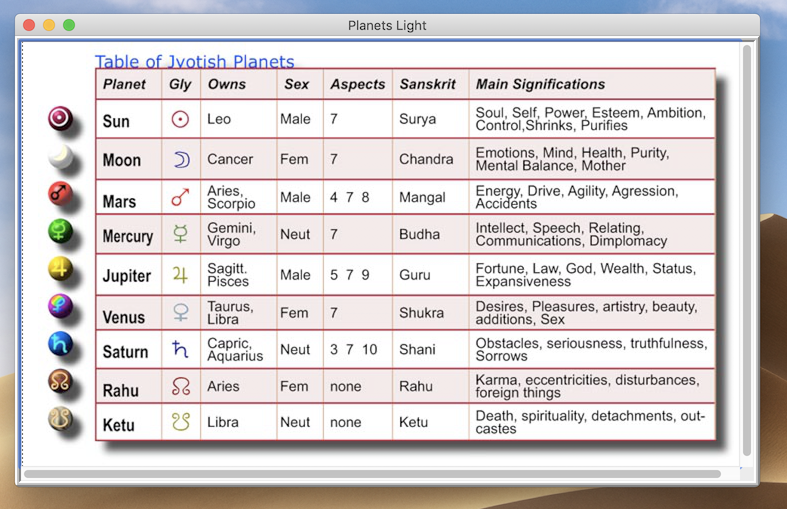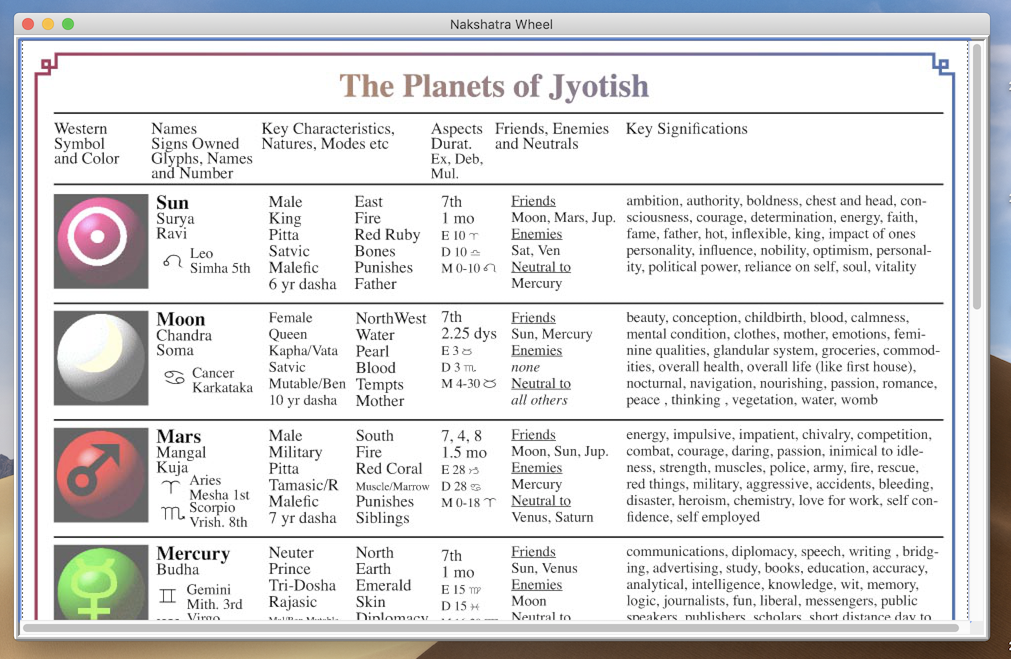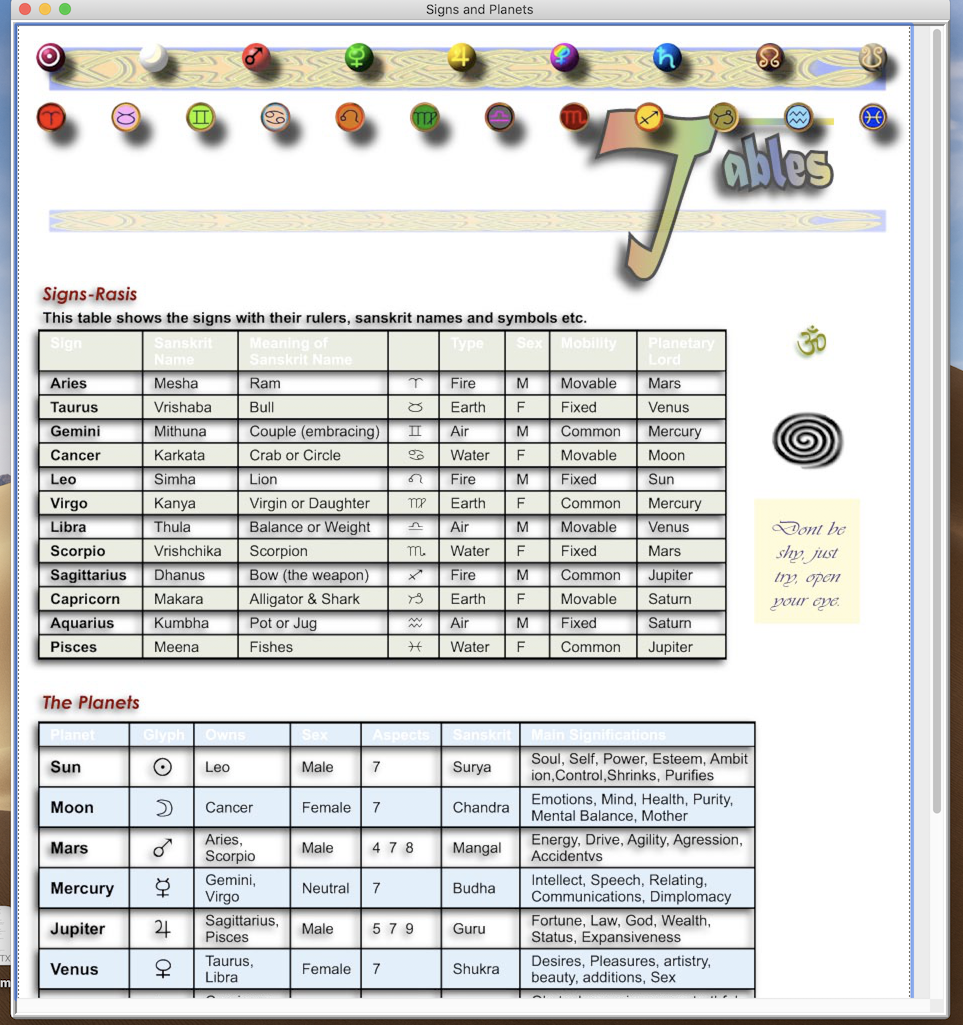More Misc. Features
Below are many features that don't fall into a particular category like others do. So we've grouped them here a picture for each with explanations as to what you're looking at. This shows how rich the Vedic Astrology Jyotish Software Program Jyotish Studio really is.
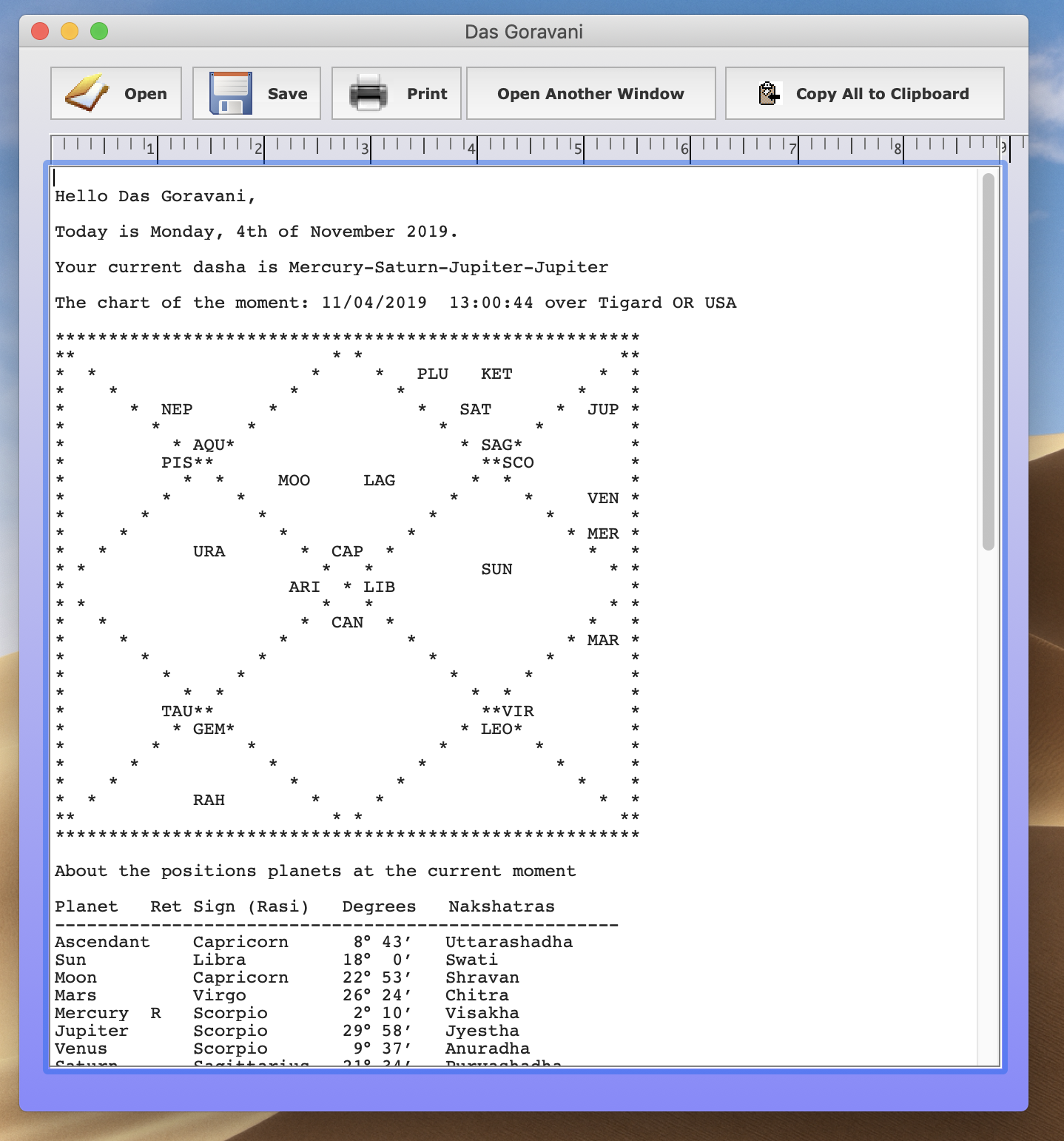
You can output the chart in text form completely, all data comes out, charts, dashes, planet lists, much other info. You can copy paste this into email for example. Even the readings come further down than what is visible in this picture.. everything comes out in this feature, very good for communications.

Chara Dasha is Plain Text view mode. Note the other two tabs at the top.
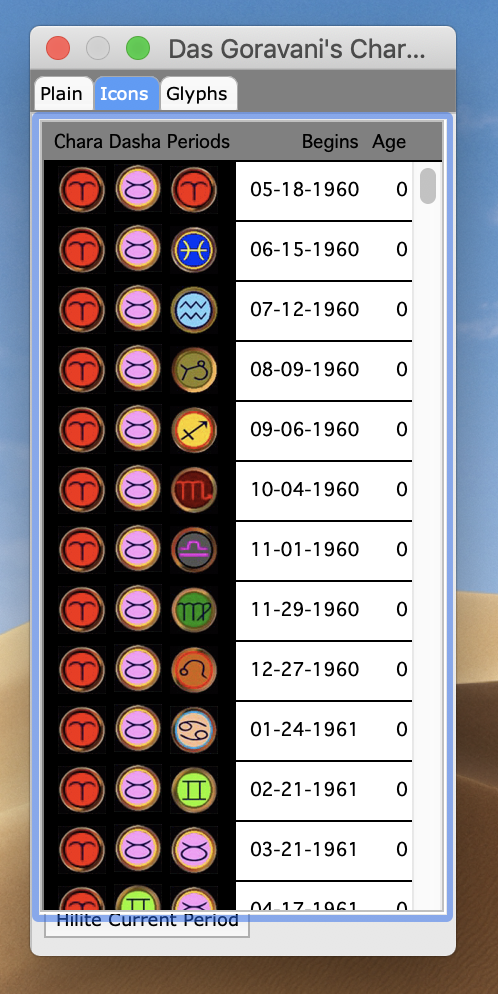
Chara Dasha in Icon View Mode. Very beautiful and gives more info via color.
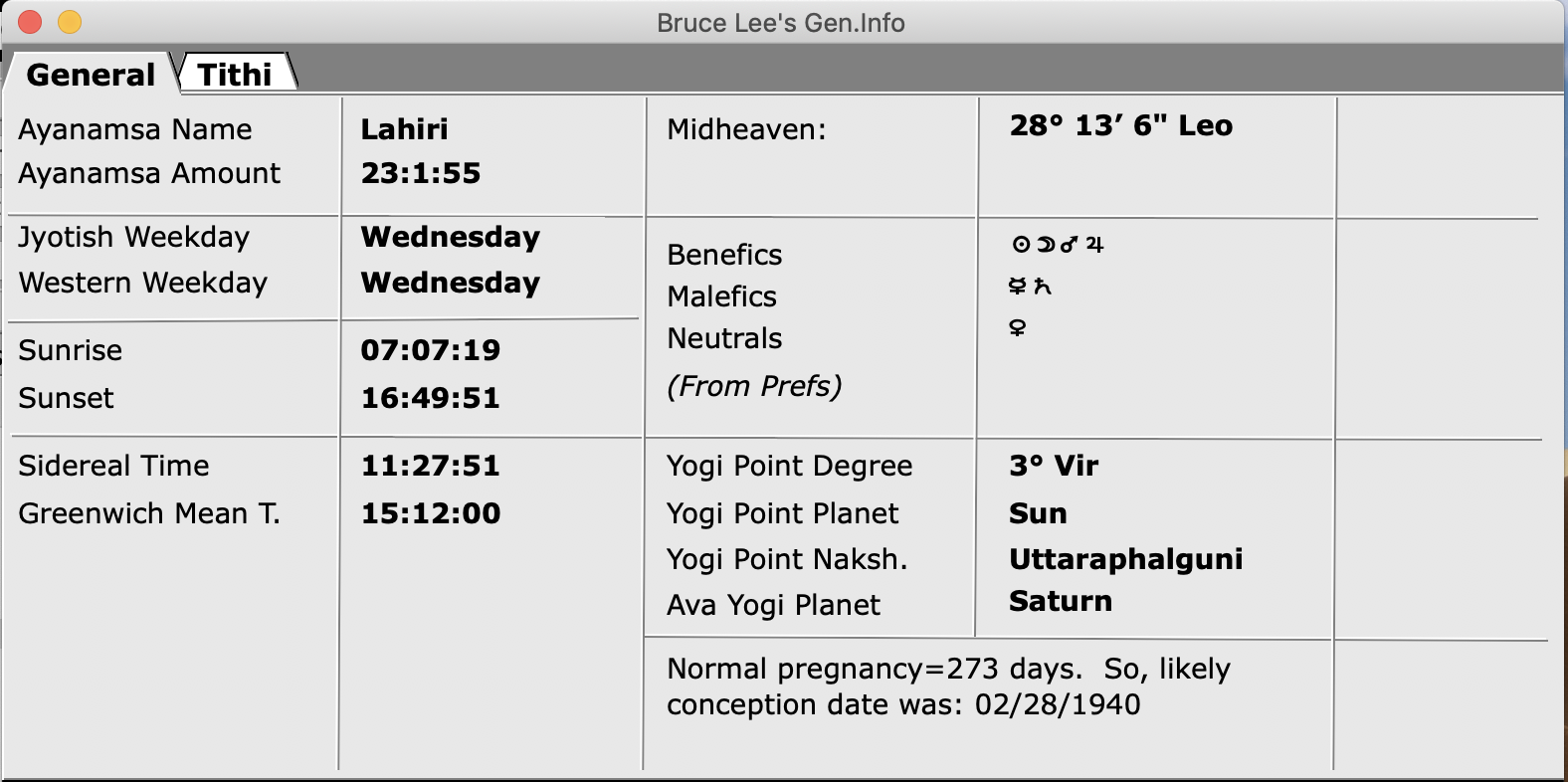
The General Info window gives various random details about the chart.
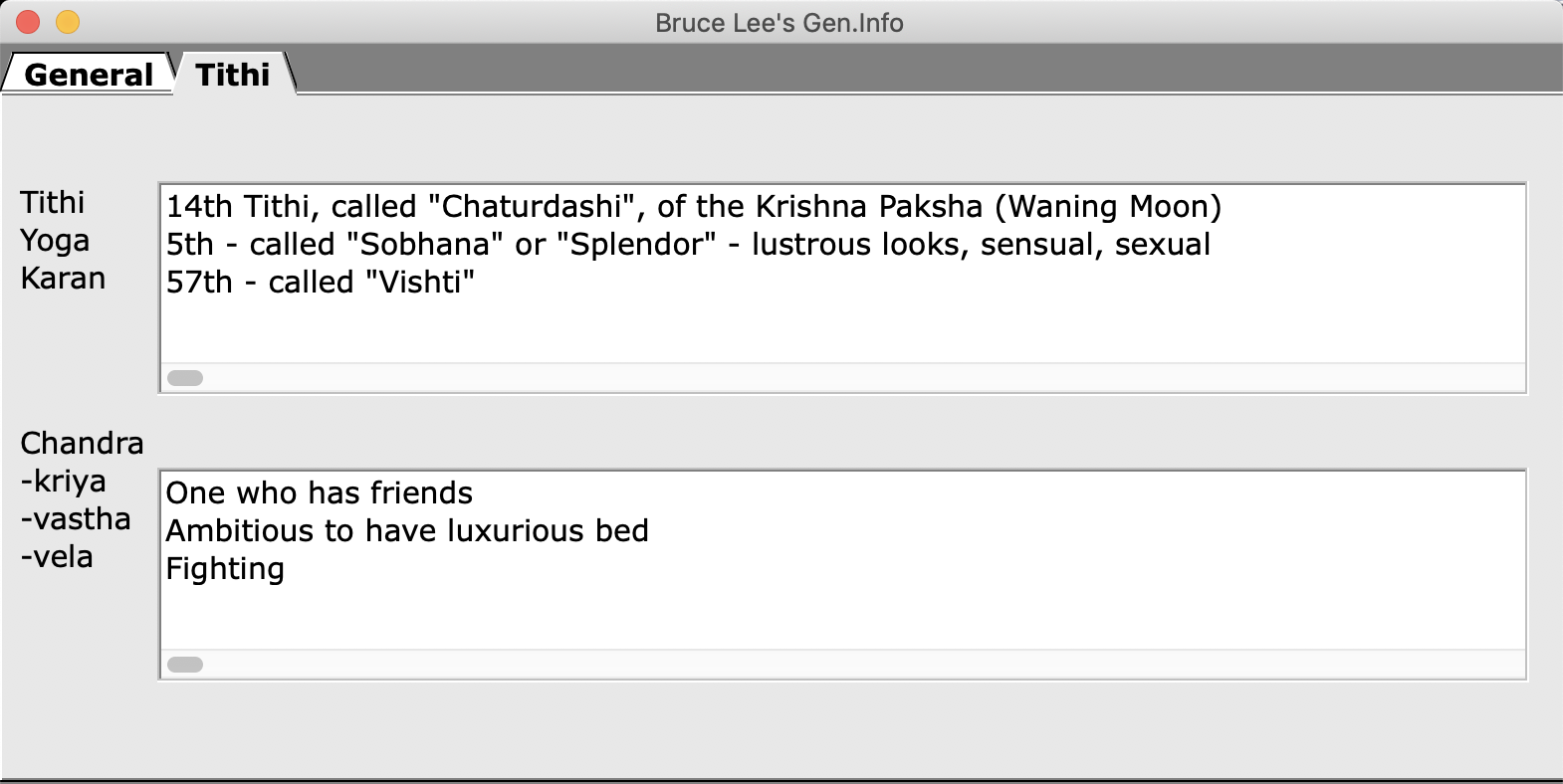
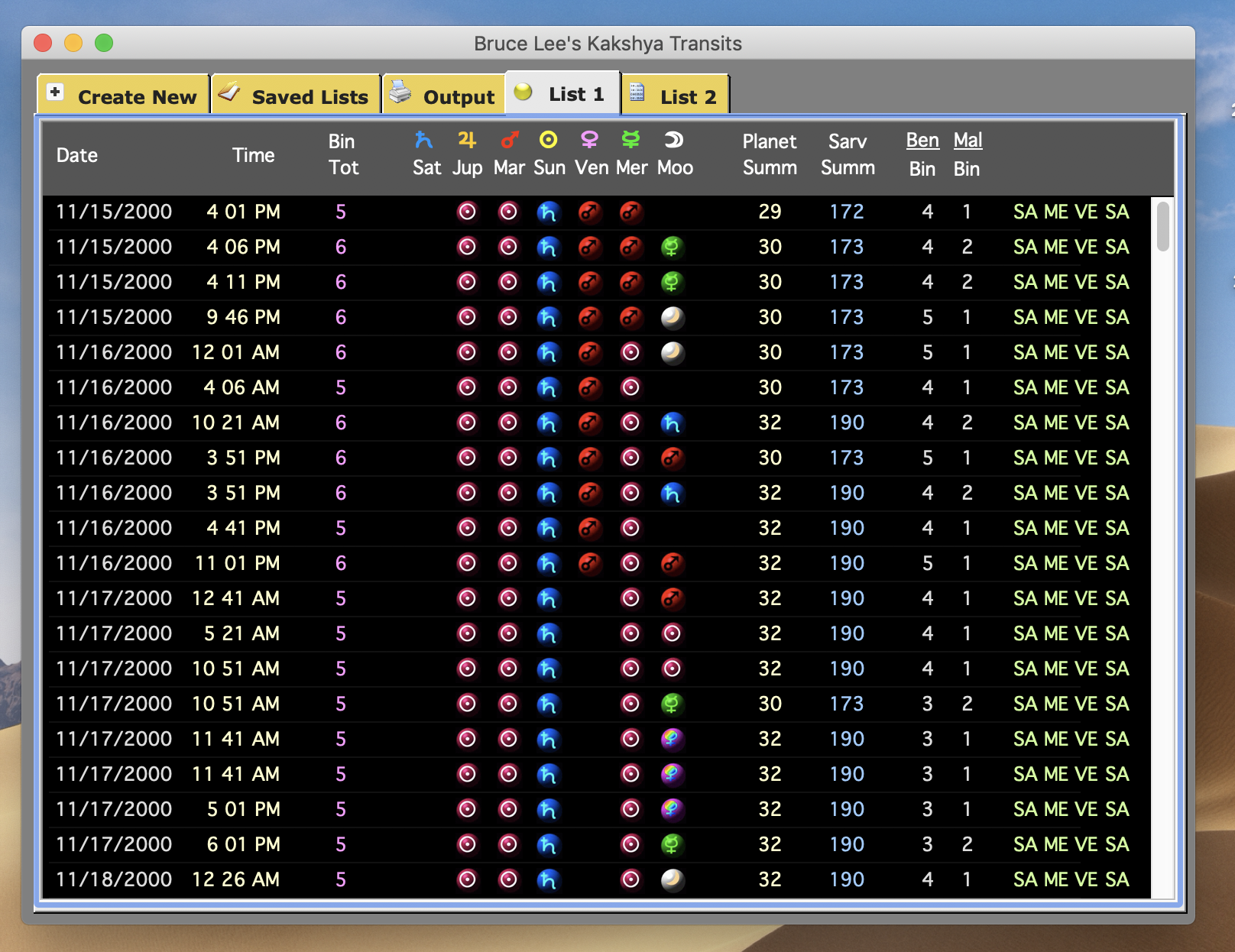
Above and below are two different views of the Kaksya Transits feature. Very telling with the aid of color, shown in glyphs both ways, good reason to learn the glyphs.
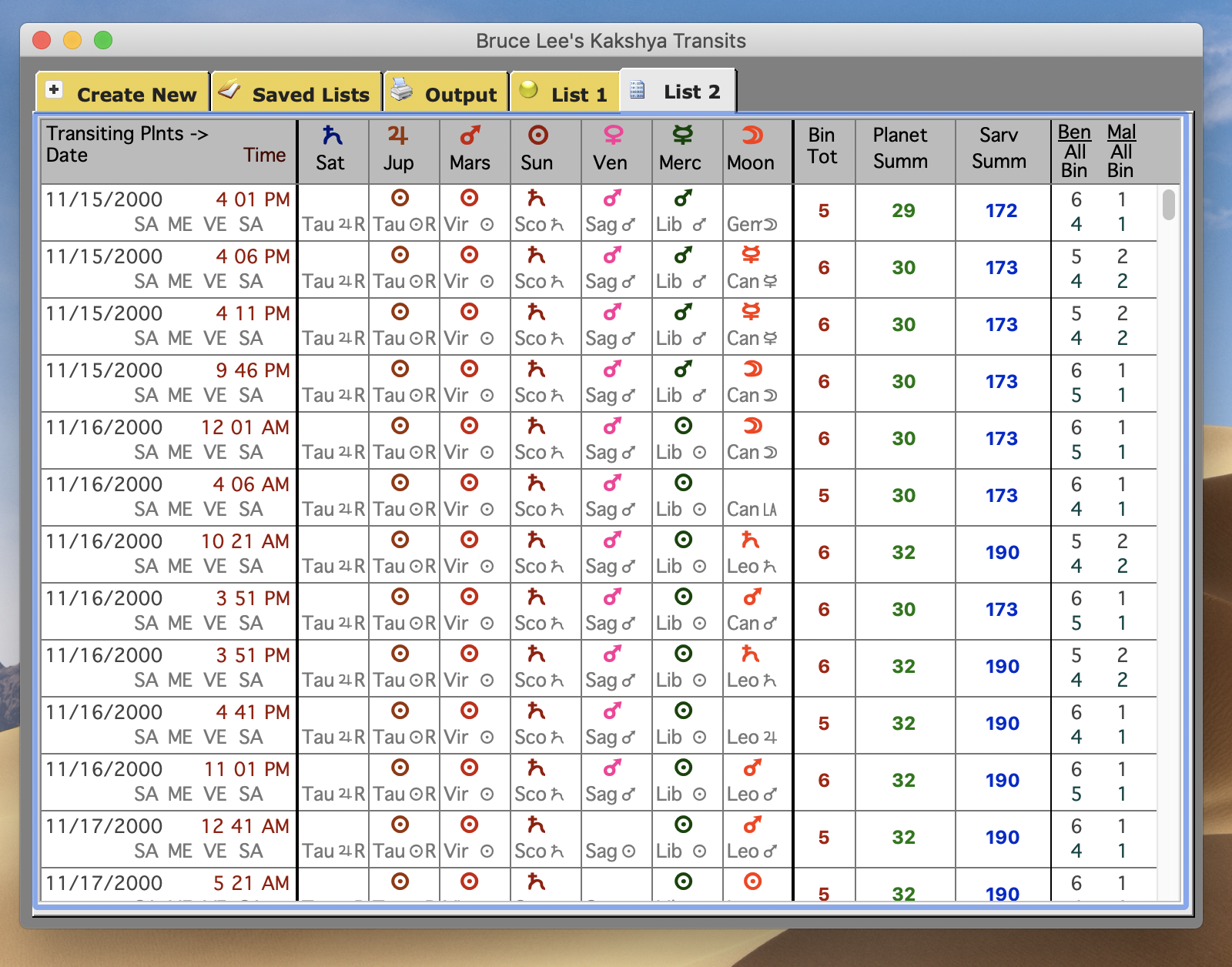
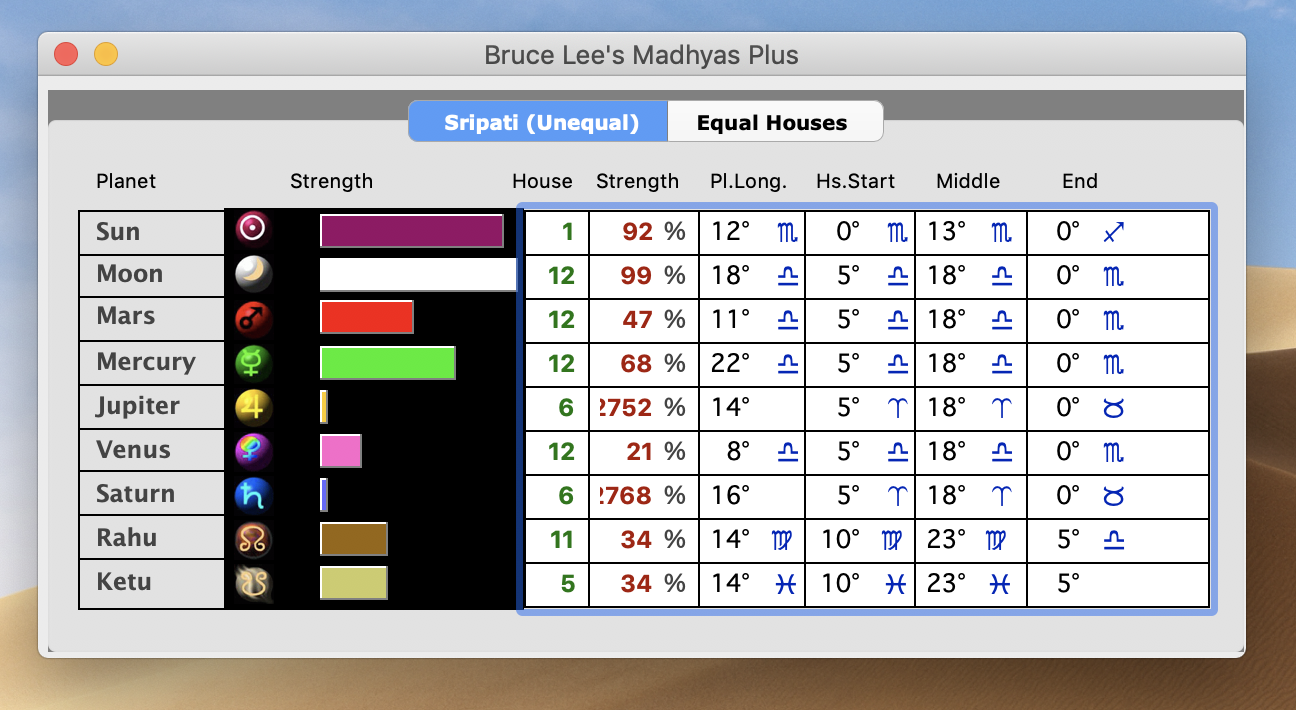
This window is called Madhyas Plus, for it gives you the beginning middle and ends of the house's, are what percentage of closeness the planets have to the middle of the houses, and a graph representing that too, the longer bar means closer to the middle of the house it is in.
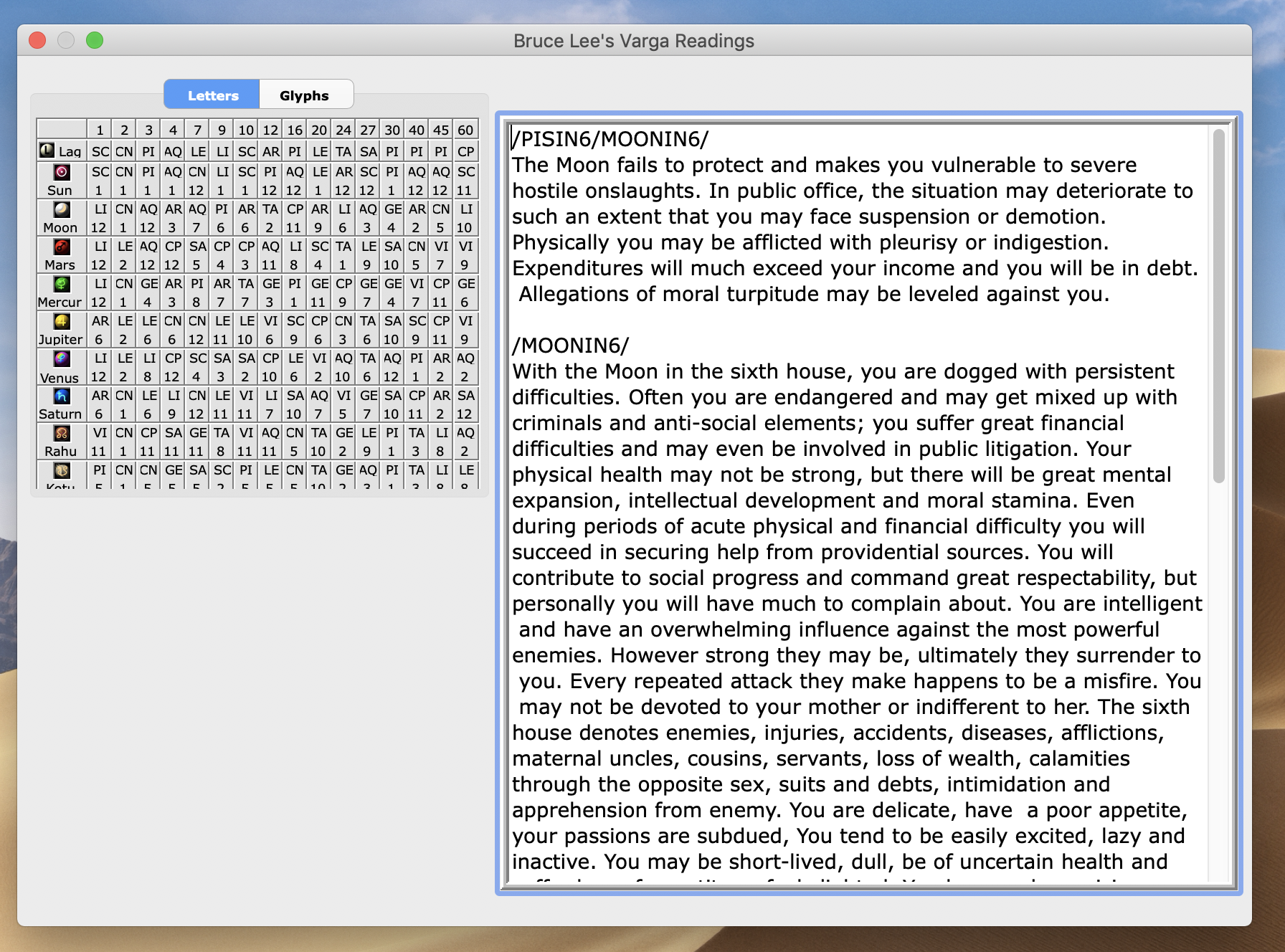
This window allows you to click very little buttons in the grid at left, each one representing a planet in a certain Varga chart, and on the right you will get readings for that planet in that Varga chart.

Info about the sign and shastiamsha of the planet clicked at the top.
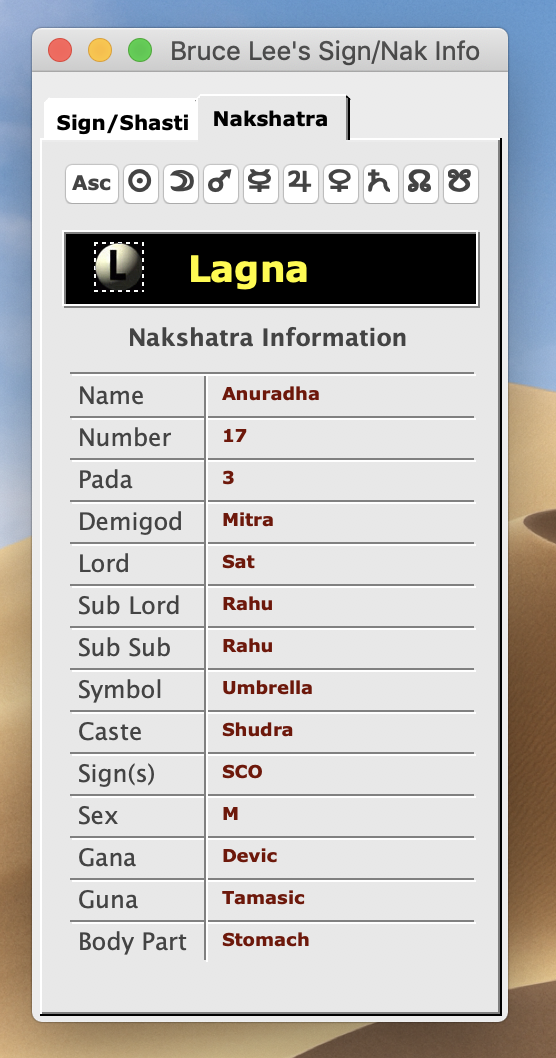
The other tab, showing Nakshatra information for the selected planet.

This is the Transit Hits window, which is very powerful and able to do it's job. It's not filled in in the above picture, but at the bottom would be displayed your list of transit hits that comes from a Transit Hits Setup that you make at the top first. Outputs to text of course, and all other normal ways, print, PDF, etc. Very good feature, very powerful.

Up Grahas covered completely. Note the tab for the Dhoomadi group.
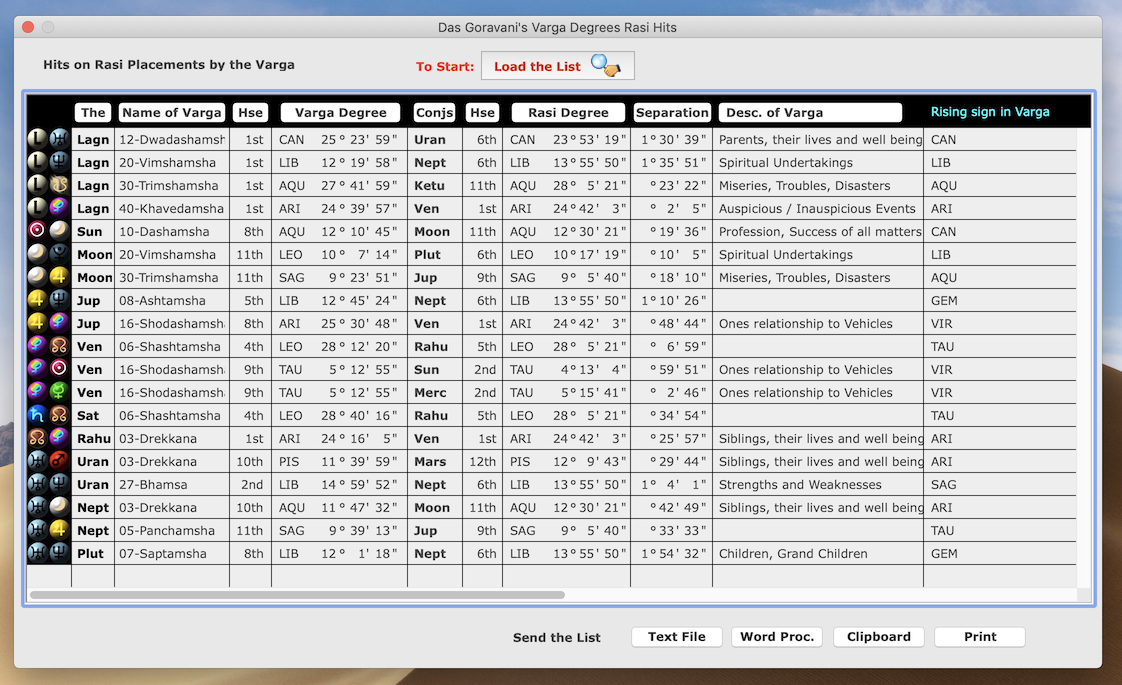
This window shows HITS the planets make from the Varga charts upon the Rasi chart… so if a placement in a Varga chart is close to a placement in the Rasi chart then it gets listed here.

The Degrees of the planets in the various Varga charts. Degrees in the Vargas.
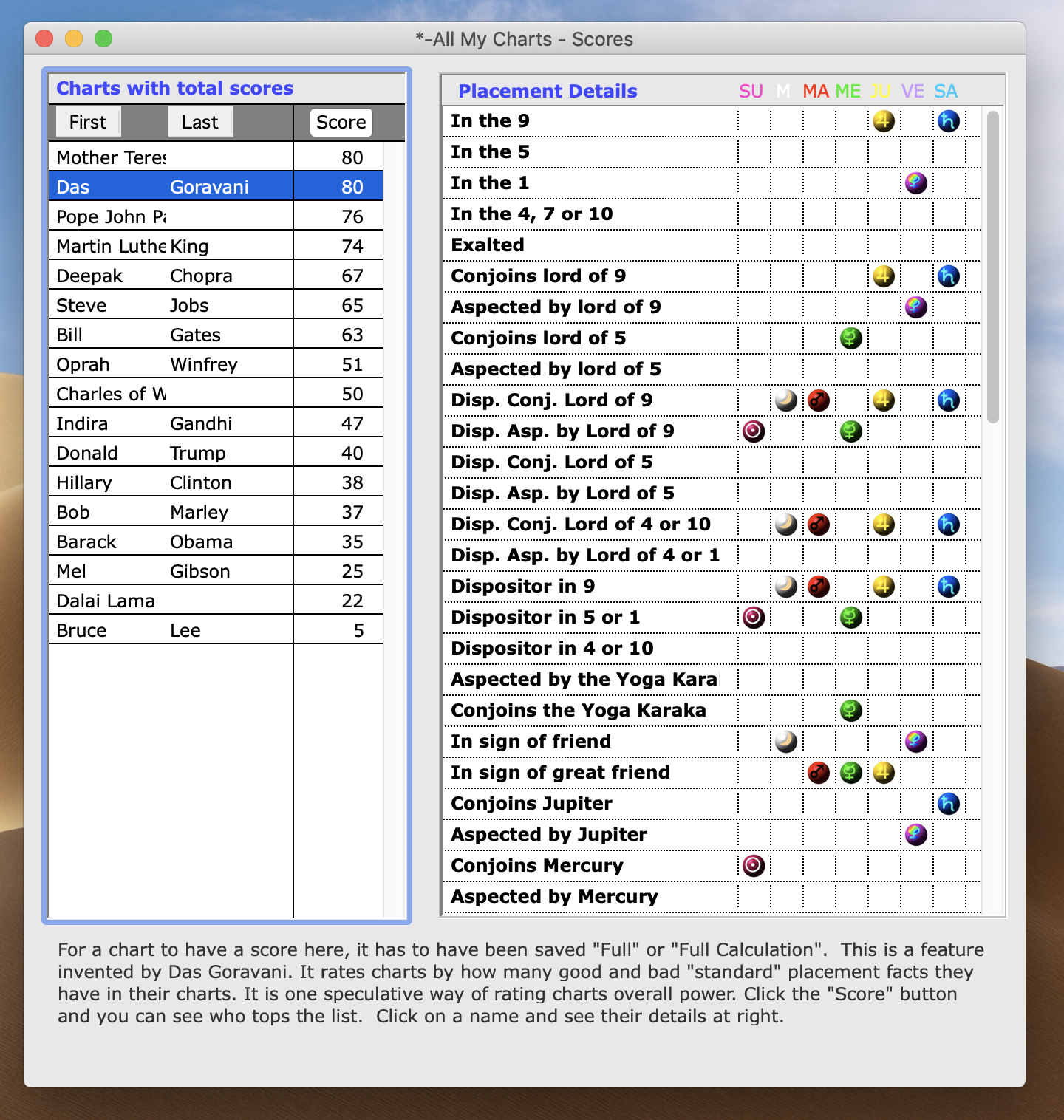
This is a feature that was invented by me, Das Goravani. It uses Parashari Principles to judge a chart and come up with just one number, rating that charts power in Parashari principles. It gives a percentage plus for good placements and percentage minus for bad placements, aspects, conjunctions, house placements, exalted verse other, all things have a percentage, which gets added up to arrive at your number. I do not know for sure if it is useful, but some of us have found it useful.
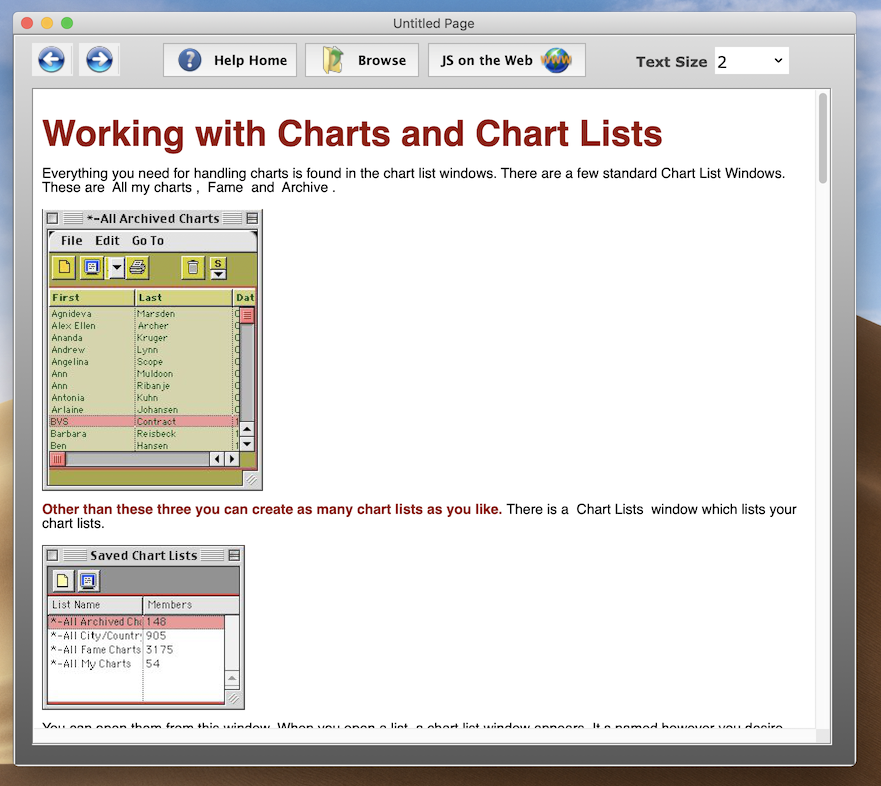
This is the online help system, it is HTML based, includes pictures, text, and pops up when Help buttons are clicked on some key windows inside the program.

Yogini Dasha is covered separately here in this window, with readings for it.
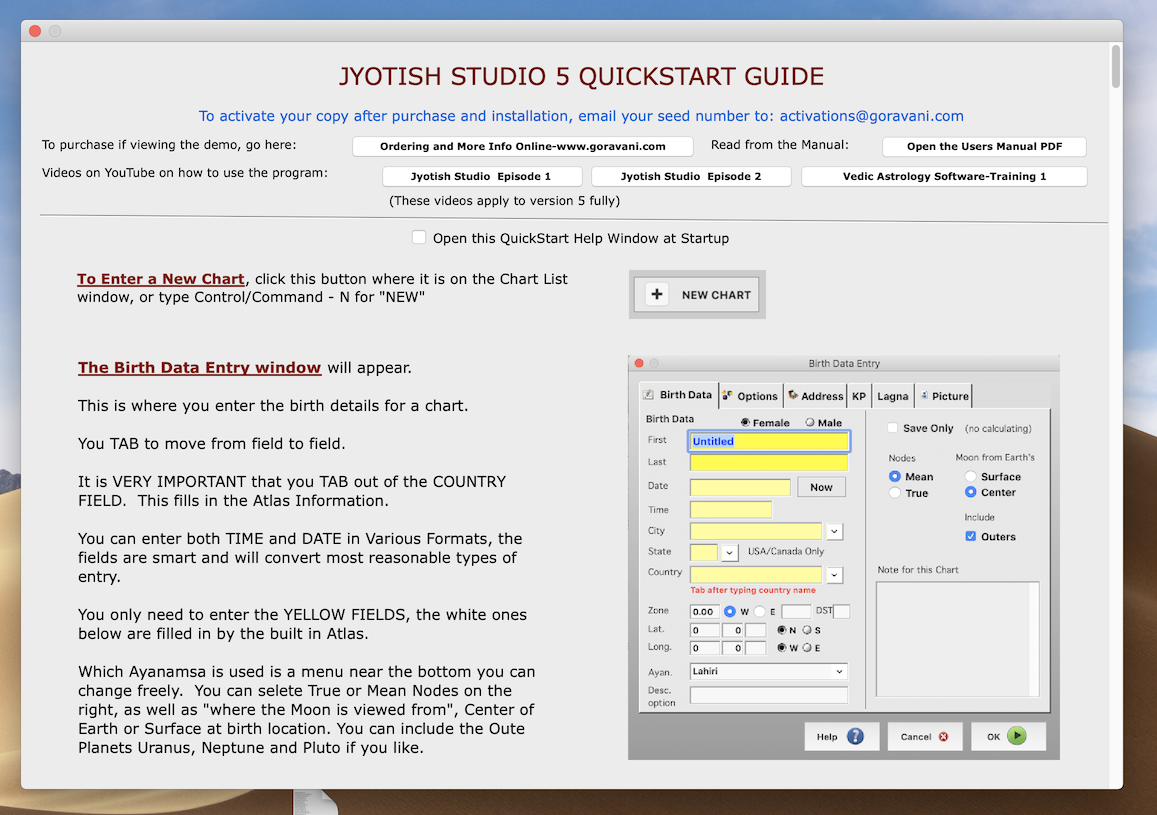
This is the QuickStart Guide feature, which greets you when the program is new.. you can disable it when you are done reading it, it helps you get going fast on the programs basics. It is designed to make sure nobody is left bewildered at first, it covers all the basics of getting going in the software.
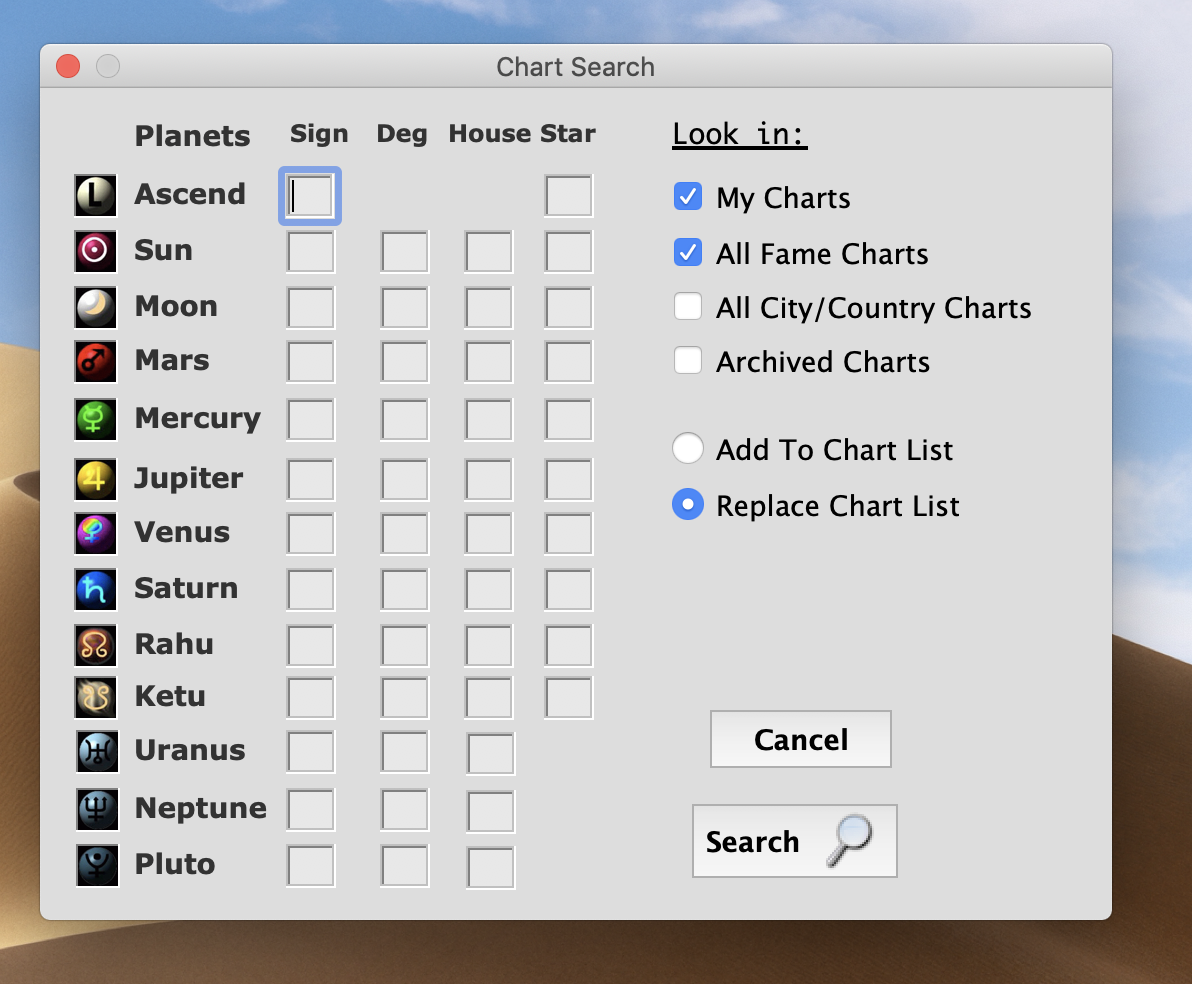
This is the Power Search feature window. Here you put simple numbers into the fields, usually filling out only one or two of them, you could for example search for everyone who has Jupiter in the 9th, by putting a 9 underneath the house column next to Jupiter.. you could add a sign, to make the search be for House and Sign, as you can see you can search the Famous chart file.. if you have calculated all of them (easy to do) then you will find from among them. In this way I did research as to who has my chart placements, to see what those placements cause in real life. It's a very interesting feature.

The program has a series of 13 graphs, note the drop down menu in blue, sayi9ng Shad Bala, that is a menu, there are 12 other graphs.
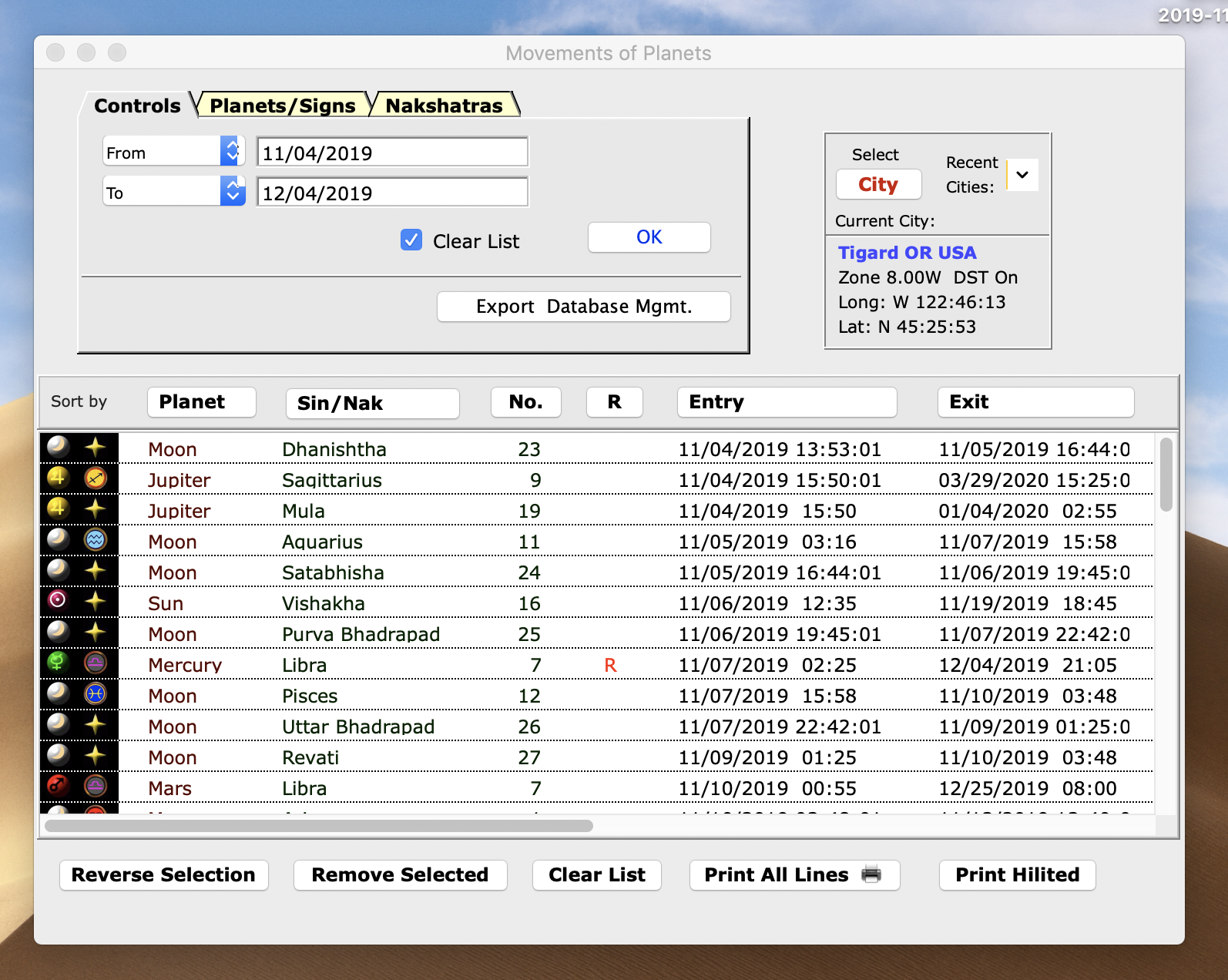
This is the Entries Exits feature… it tells you when the planets enter and exit the signs and nakshatras for any date range you specify, you can also specify which signs and nakshatras you are interested in, so you could put your moon Nakshatra for example and know when your Sada Sati's occur that way..
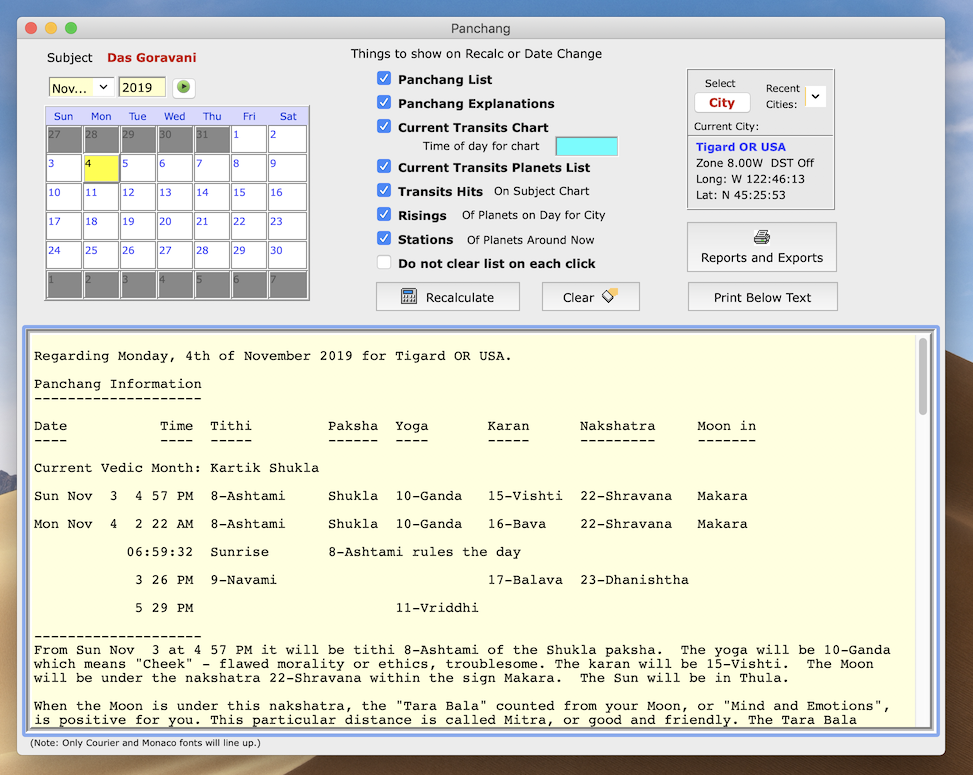
This is the "Panchang Plus" window. It's very powerful in terms of Panchang and related data. The yellow area is where the output shows, and you can copy paste directly from there.. it's pure text, you can choose what things you want via the checkboxes top middle.. you can click the Calendar to see Panchang data for that particular day, there are various reports behind the buttons. Panchang is covered completely and nicely via this feature.
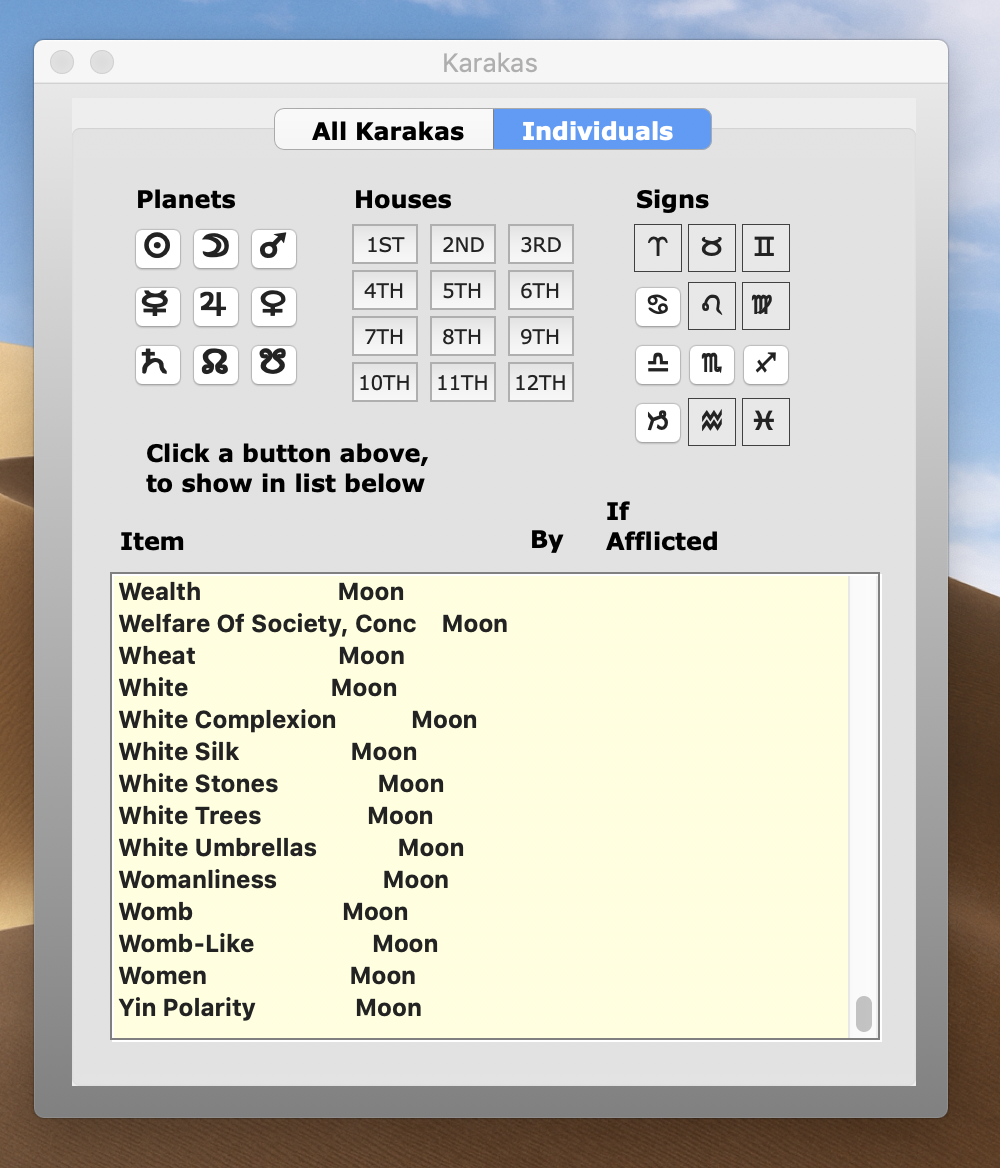
Karakas are covered completely and nicely via this feature, where you click a planet, sign or house and see the Karakas for that object.
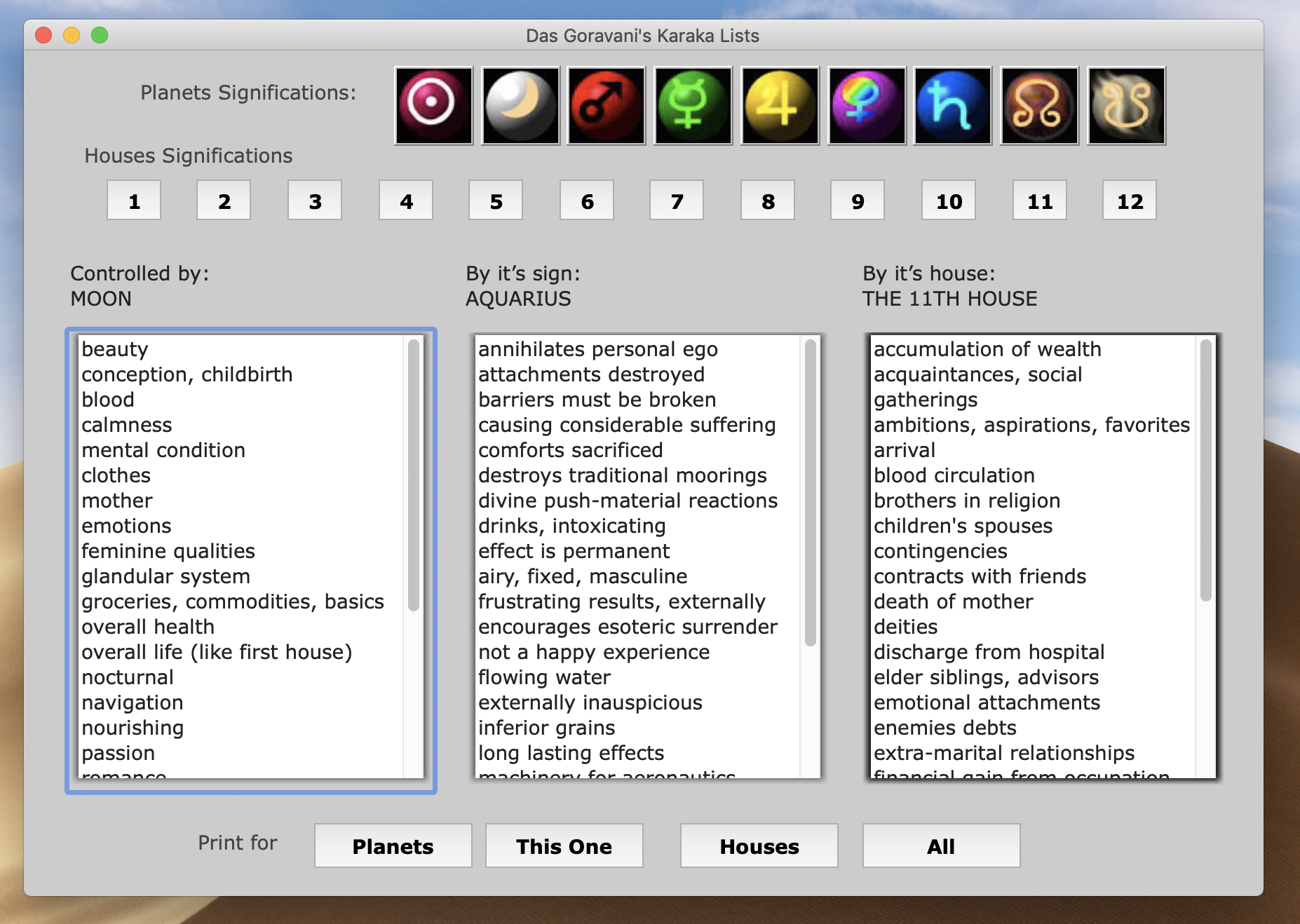
Here we have the Karakas again but this time they are for a persons chart, you still click a planet or a house, but it knows the sign then too, and shows for the planet, sign and house no matter what you click.. you direct it but it shows all three always, very handy for combining from the three columns to come up with sentences that apply to the chart.

Another view of the Text Output feature for a Chart.
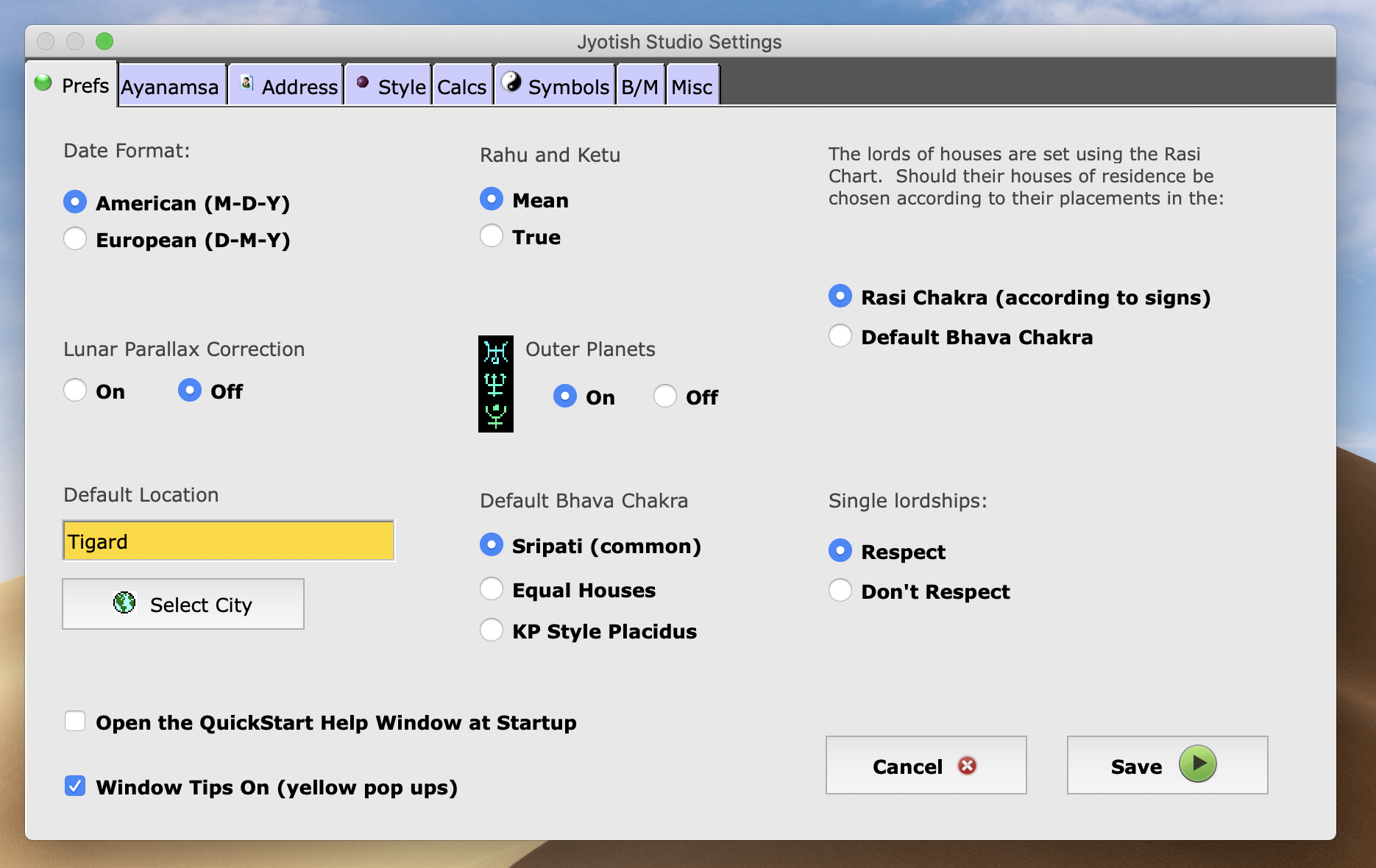
Above and below are two of the Tab Panes from the Settings Window, where you put in your choices for the various options the program offers. Below you can choose the default ayanamsa, which you can override when entering a chart, you can define your own ayanamsa too, not fully shown, you have to click the button for it then it shows in the open area near the bottom. But you can define ayanamsas
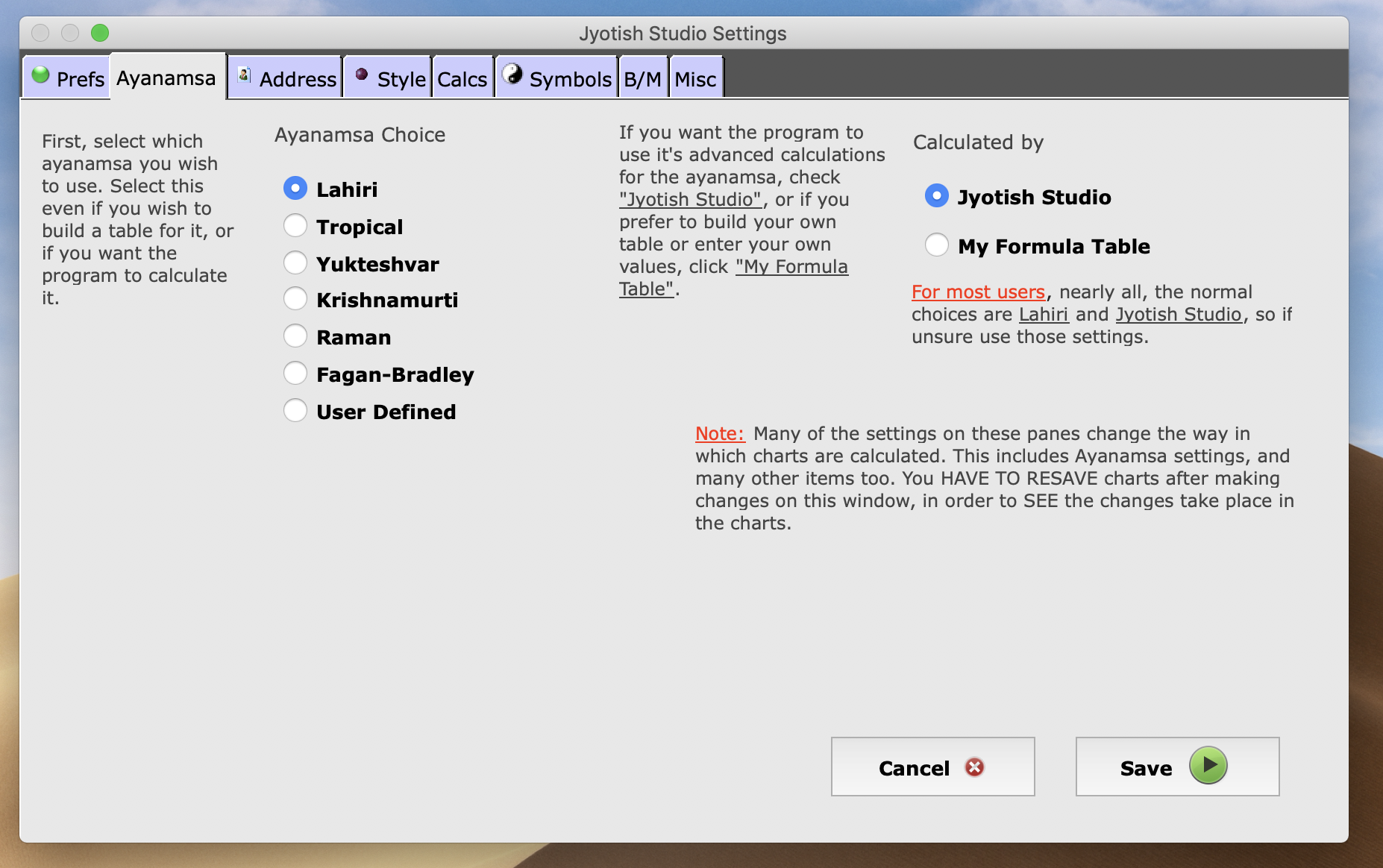

Above is the Search the Readings Database feature. It allows you to search via our tagging system, some tags are shown in the blue example menu shown at left in the pic. You can search for readings by up to 4 tags which is plenty.
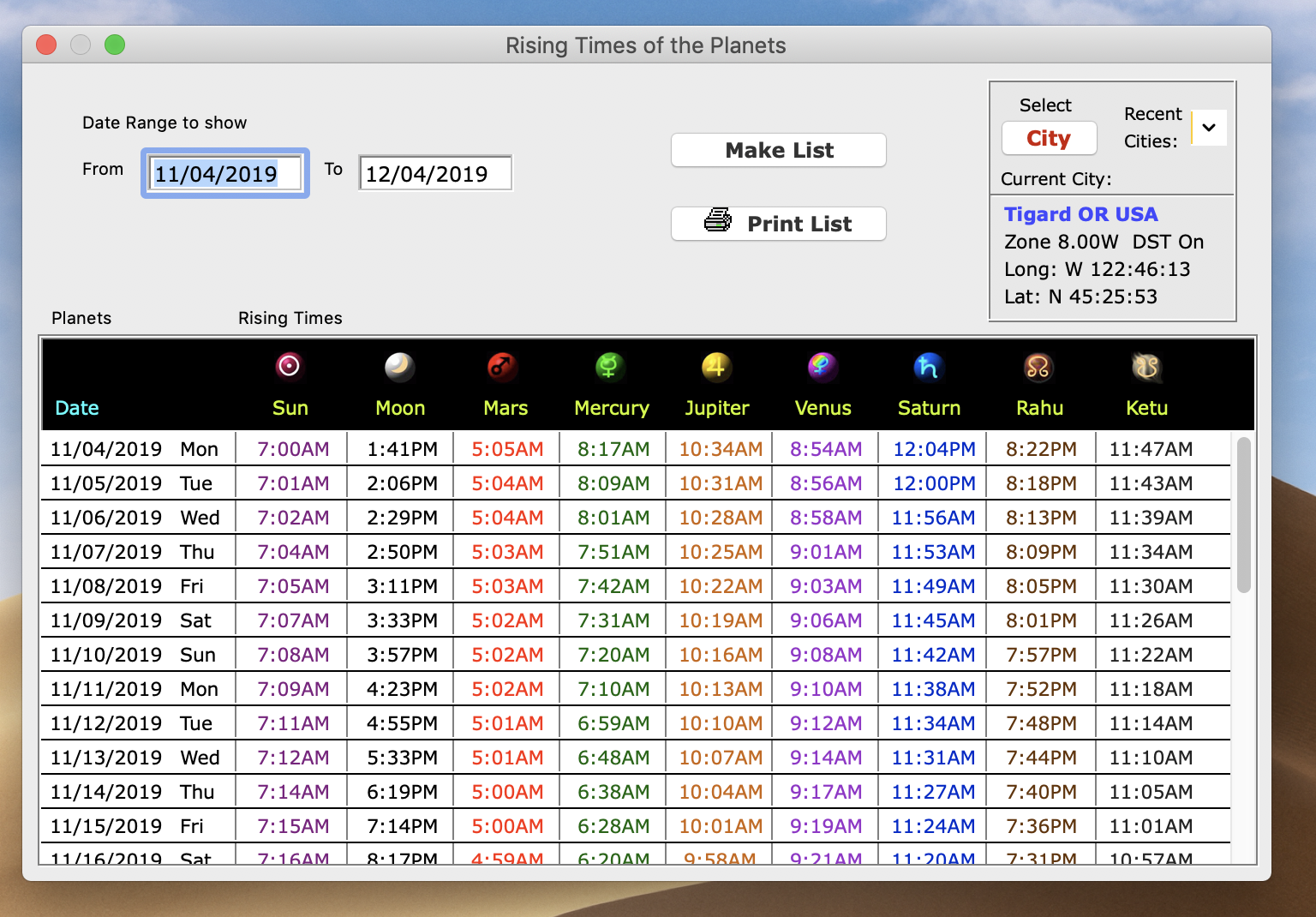
Rising Time of the Planets.. you input the date range, and it gives you the rising time for the selected city.
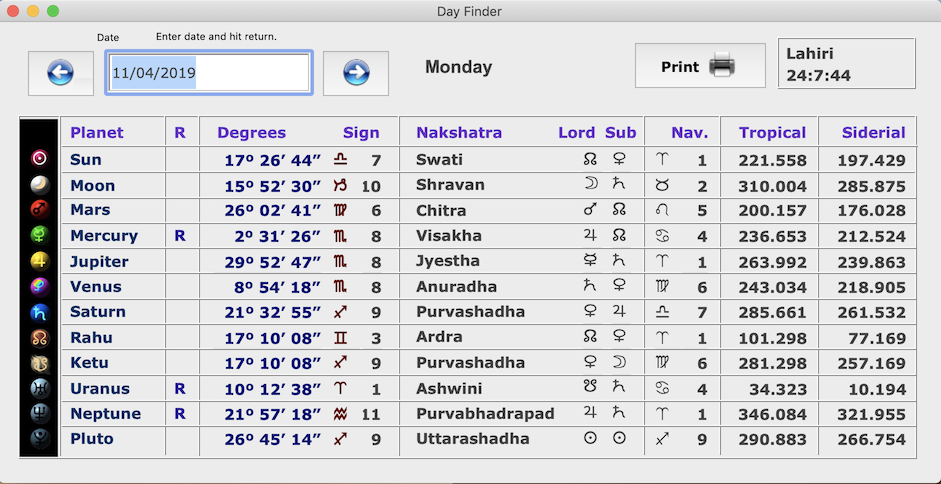
This is the Ephemeris window. It shows you very well what sign and Nakshatra, lord and sub lord, etc.. positions of the planets on a given day, an ephemeris.
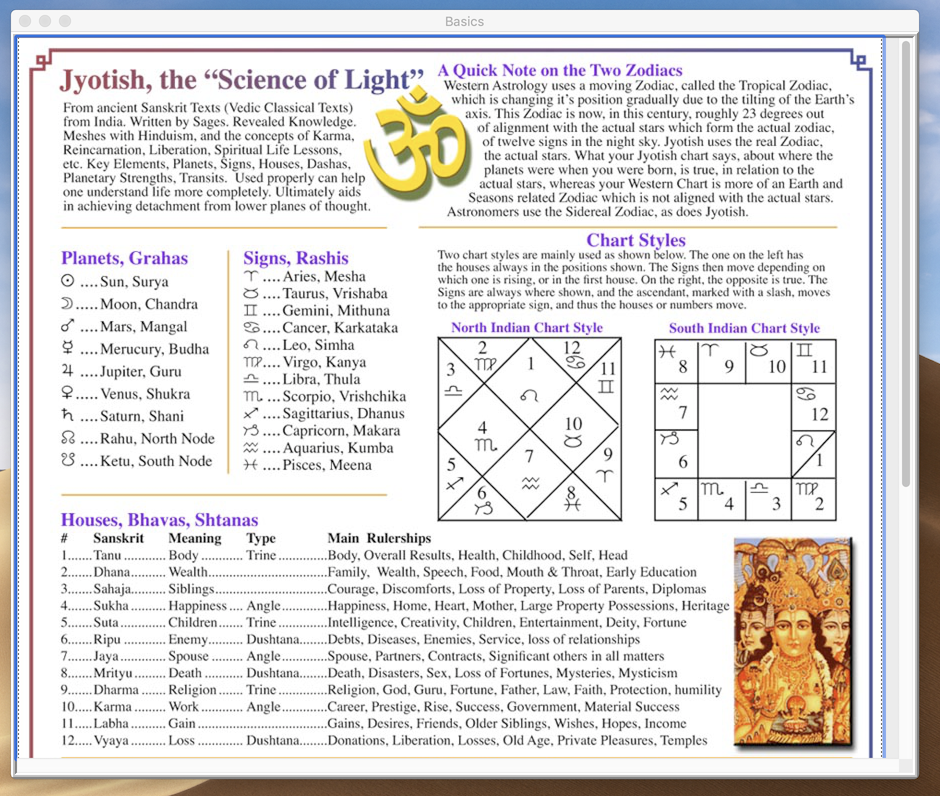
Now the pictures above and all below to the end of the page are from the built in learning resources, guides, to help you learn or lookup something about Jyotish. Above is a general information window, that is basic, below is the usage of the Varga charts table.

